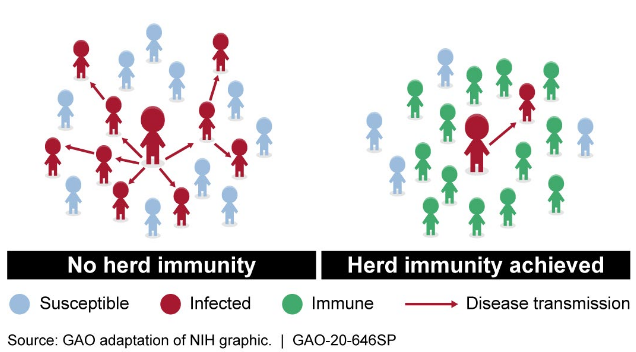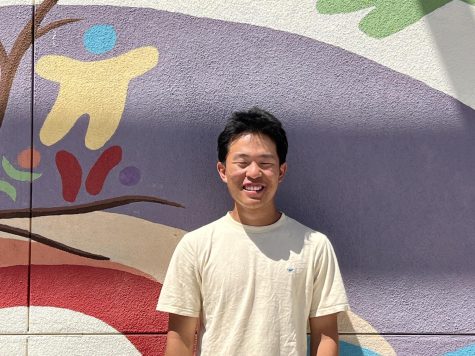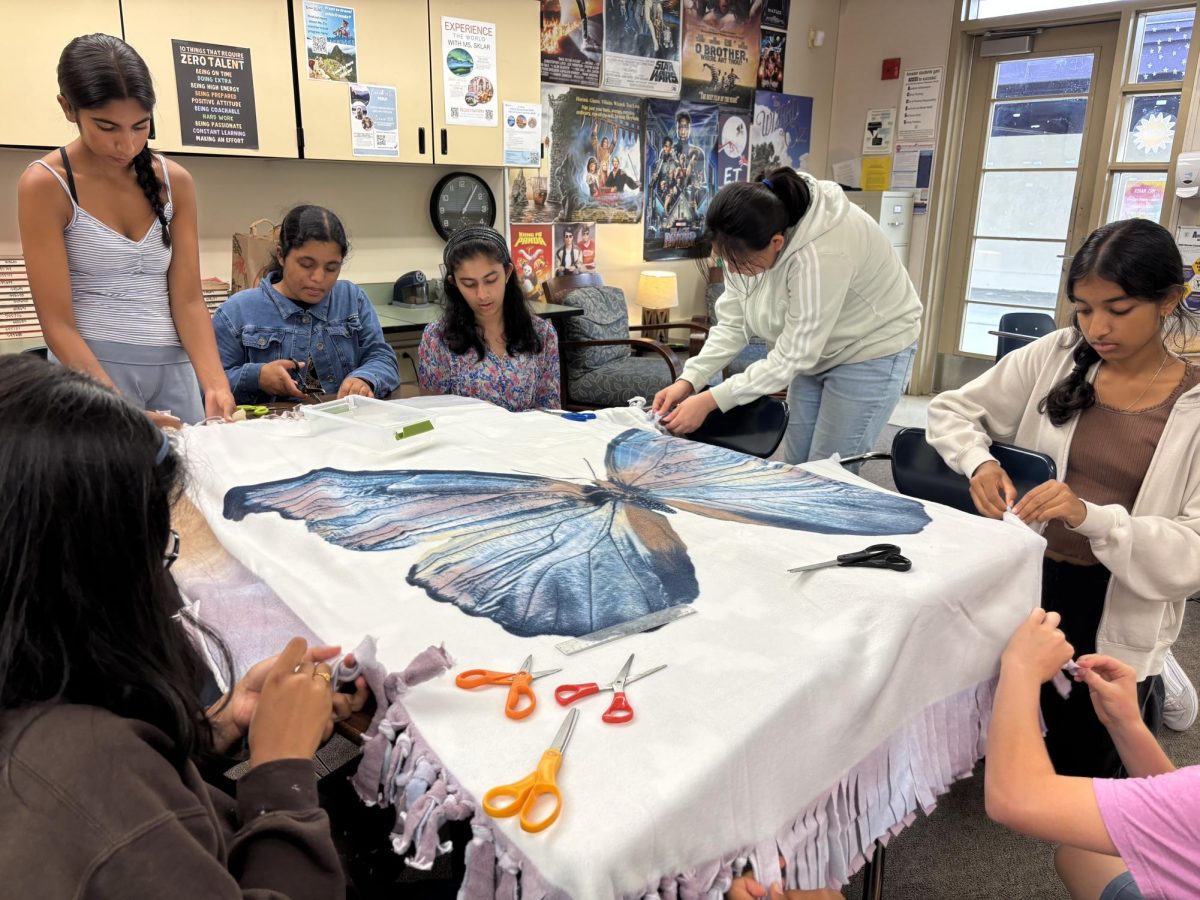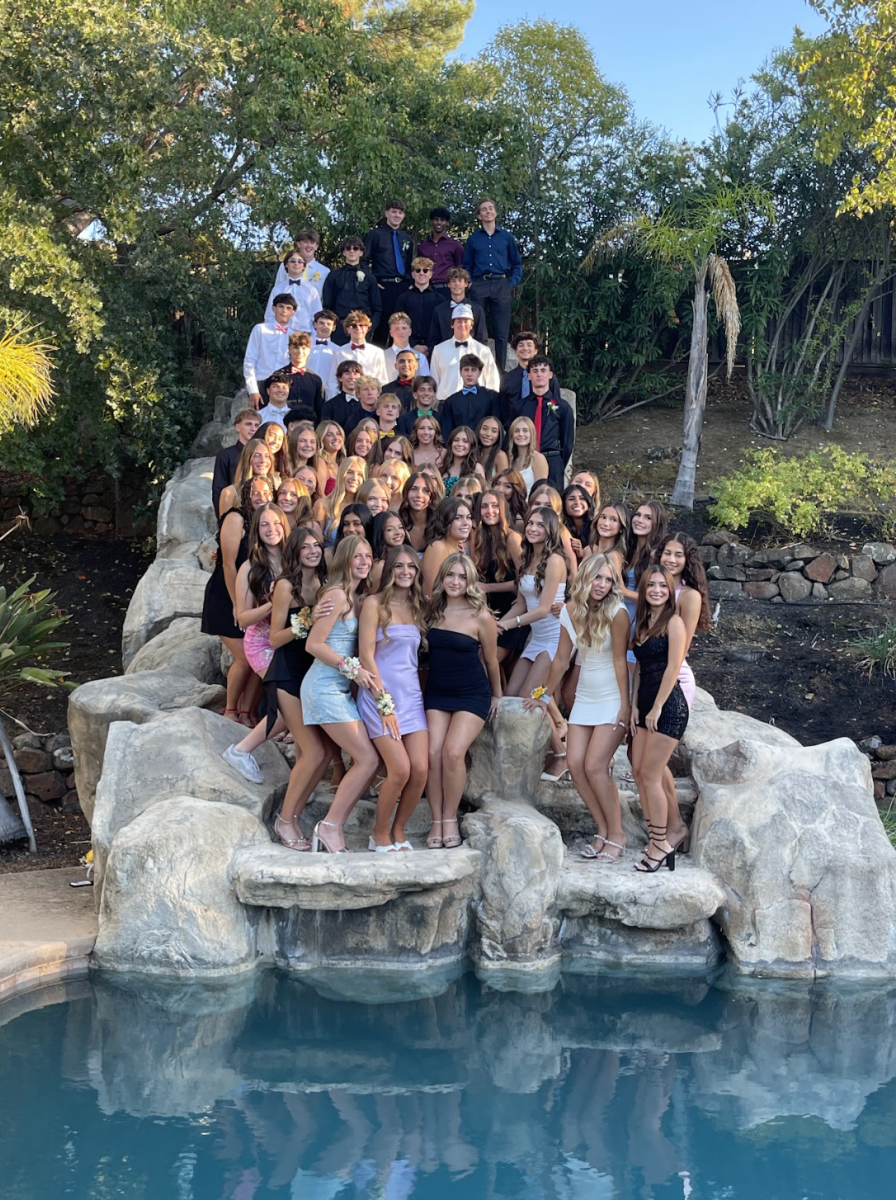Why America should follow Asian countries’ approach towards COVID
U.S. Government Accountability Office
Herd immunity is where a certain threshold of the population is immune against a pathogen, rendering it unable to spread effectively.
February 27, 2022
America should follow China’s example of a stricter approach towards dealing with the COVID-19 pandemic due to its effectiveness, efficiency, and speed of it.
When the COVID-19 pandemic hit in March of 2020 in America, there were multiple different responses to it. The government had never quite experienced a pandemic of this scale before the last true pandemic humanity had faced was nearly over a hundred years ago.
Ways to Approach a Pandemic
Public health experts and virologists had come up with three main approaches to dealing with a global pandemic previous to 2019, all with their own disadvantages and advantages.
“There are different ways to deal with a pandemic, but some are at the cost of human lives, while some are at the cost of the economy. Personally, if I ruled the world, I would have a very strict lockdown for just two months, and then everything would be back to normal. Sadly that’s not doable,” said Cora Da Costa Pereira, AP Biology teacher.
One way is the delay and vaccination approach. This is to slow the spread of the virus using measures such as quarantines, lockdowns, masks, and social distancing until an effective vaccine can be developed. Once a certain amount of the population is vaccinated, herd immunity will kick in.
Another approach is the “slash and burns” approach. This is to let the virus race about the community, take its lives, and what’s left of the population will have developed immunity against the virus. Herd immunity kicks in at this point.
The final approach is to contain and exterminate. This is to completely stop the spread of the virus, quarantining those exposed with strict measures and lockdowns on a national, or even international level. Eventually, the virus will be completely eradicated, and no herd immunity step is needed.
“There’s a fine line between infringing on human rights and helping society. Wearing masks, staying inside, and vaccination really isn’t anywhere near that line. If people didn’t get so mad at the government this whole pandemic would be blown over by now, with almost no cases every day,” said Da Costa.
Pros and cons of different approaches
From an American standpoint, obviously “delay and vaccinate” seems like the correct response. The other two are simply too outrageous, too outlandish.
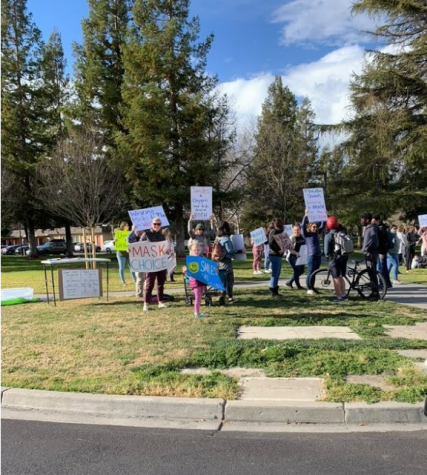
But “slash and burn” may not be as horrible as some may think. It’s the fastest and the quickest way to get over a pandemic and poses the least harm to the economy as no lockdowns are required. Contain and exterminate has a very fast response as well if done correctly, a pandemic may be over in two or three months.
Delay and vaccination require a long-term slowing down of the economy, and the response will take much longer to kick in. A vaccine typically takes one to two years to fully develop.
While “slash and burn” is politically incorrect, as no government would stand by and let its citizens die, this is the approach that poorer countries who are unable to develop a vaccine on their own or enforce a shutdown mostly rely on. Contain and exterminate may seem like the ideal solution, but to properly carry it out requires coordination and cooperation on an international level-every country needs to contain and exterminate the virus. Governments simply lack the resources to contain and exterminate in every corner of the world, not to mention cultural barriers and egos preventing coordination.
Therefore, delaying and vaccinating seems to be the approach most countries are taking. America, however, is failing at it miserably. Here’s why.
What America should learn from China
While China’s approach is still a delay and vaccinates approach, the Chinese government uses more aspects of “contain and exterminate” than America. Any single case reported means the entire city must lockdown, with no shops and businesses open. The only people required to go to work are doctors and police officers, with rare exceptions of other personnel-not like the American definition of “essential workers”, constituting half of the lower class and nearly all of the service industry. Every person’s phone is tracked for contact tracing, and simply going outside requires a valid reason or errand.
“Security measures in China are very strict. I can’t even go back to visit China right now because they allow few Americans in, with COVID being so severe here than it is in China,” said David Zhu, whose parents live in China.
This may seem to Americans a gross violation of human rights and “freedoms”, but this approach is remarkably effective. Lockdowns in the majority of China, Korea, and Japan only lasted for 2 to 3 months. Even today, America reports nearly 1 million cases per day, while China reports 5000 cases per day and Japan at about 100 thousand. Keep in mind that the population density of these countries is incredibly compact compared to America.
“Imagine a lockdown that lasted only for 2 months! Instead of going back to school and working in 2021, things could have been returned to relative normalcy in simply June of 2019! And not at the high cost of ‘human rights’ or ‘freedom’ either-most people simply have to stay home for a month or two. Even more so, a wave and surge that lasts for only 2 months mean that the economy would be barely touched. No supply chain issues, no inflation, no rising debt, and unemployment. All Americans need to do is simply stay inside and resist the urge to spread COVID by going out and about with a mask,” said Zhu.
Of course, cultural barriers are a part of it as well. Even before the pandemic, the high population density of Asian countries had made it so that it wasn’t uncommon to wear a mask in public. American culture, with a so-called “freedom” at the center of it, absolutely prohibits anything more severe than a “recommendation” to wear masks and take vaccines.

